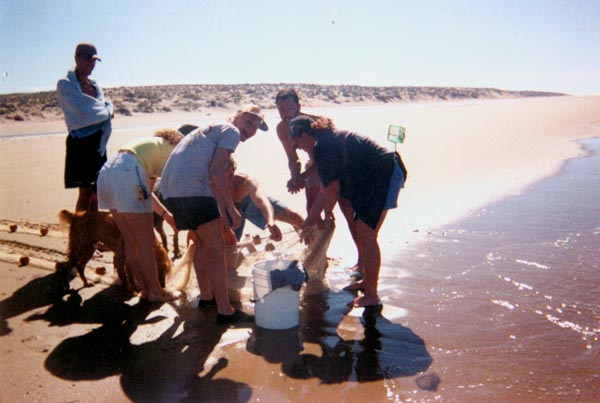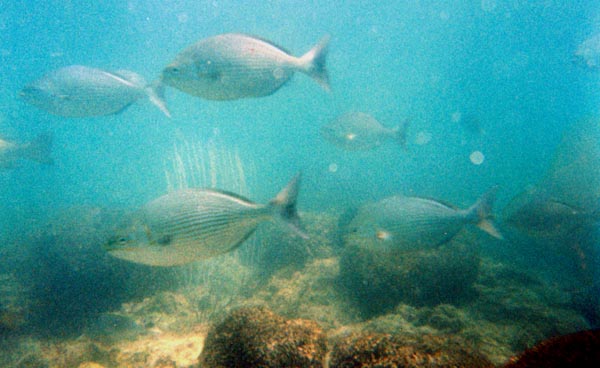|
Educational Programs
|
||||||||||||||||||||
 |
||||||||||||||||||||
|
The reserves established by the SDCC will provide protection to vast areas of the Sonoran desert, and Gulf of California shoreline. By doing so, the SDCC provides research sites for academic institutions, within a variety of largely intact Sonaran desert and coastal habitats. In addition the SDCC will be offering an array of educational activities within the reserves, such as backpacking, camping, and bird watching. Boat excursions will be taken to islands within the Gulf of California, such as Isla San Jorge, to conduct SCUBA diving, snorkeling, and additional bird watching. The SDCC will announce these activities well ahead of time, within the newsletter and website. |
||||||||||||||||||||
|
Research
|
||||||||||||||||||||
|
By protecting areas of pristine Sonoran desert, and associated coastal habitats of the Gulf of California, the SDCC reserves provide an unparalleled opportunity to conduct a wide array of ecological studies. Initial efforts will focus on collecting baseline ecological data (e.g. creating species list and permanent transects) within the reserves of La Estrella, and San Lorenzo. In addition, the SDCC will provide laboratory facilities within each of these protected areas. |
||||||||||||||||||||
 |
||||||||||||||||||||
|
La Estrella Reserve The research facilities at the reserve of La Estrella are rustic, at best, as illustrated above by these Marine Biology students from the University of Arizona. In order to avoid establishing permanent infrastructure, the SDCC has a 1961 GMC schoolbus which has been completely refurbished as a functional laboratory or research station. |
||||||||||||||||||||
 |
||||||||||||||||||||
|
Invertebrate and fish ecology of sand/soft bottom communities have been poorly studied, in comparison to more attractive rocky shorelines. This bias is exemplified in marine research conducted within the Gulf of California, despite the fact that more than half of its shores are sandy. The extreme tides experienced along the shore of La Estrella facilitate the sampling of intertidal communities, as illustrated by these students seining juvenile fish within the large tidal lagoons of La Estrella.
|
||||||||||||||||||||
 |
||||||||||||||||||||
 |
||||||||||||||||||||
|
The alluvial silt/clay playa expanses present on La Estrella are impermeable, and conducive to creating pockets of standing water of various sizes, ranging from puddles to lagoons. These ephemeral pools are the habitat of a unique branchiopod community. The life cycles of these crustaceans are completed within a couple of weeks, as the pool desiccates. Embryonic cysts are deposited in the sediments of the pools that diapause until the following inundation of the pool. The photo below shows Mike L'Annunziata sampling the ephemeral pool branchiopod community within one of the ephemeral pools of La Estrella.
|
||||||||||||||||||||
 |
||||||||||||||||||||
|
Local fishermen from the ejido Dorados de Villa, can be hired for boat excursion to the island of San Jorge, to conduct terrestrial and subtidal research. Isla San Jorge is amongst the least visited islands within the Gulf of California. It has a large california sealion colony (Zalophus californianus) and is the northern most nesting site of the blue-footed booby (Sula nebouxii).
|
||||||||||||||||||||
 |
||||||||||||||||||||
|
San Lorenzo Reserve Within the center of San Lorenzo lays a large ranch house, which the SDCC will provide as a research facility, complete with laboratory and living quarters. The expansive area of San Lorenzo, 32,550ha (80,398acres), encompasses the mountain range of Sierra Colorada, and provides the opportunity to conduct ungulate ecological research. Species of concern include desert bighorn sheep (Ovis canadensis nelsoni), which are currently facing severe threats in the Sonoran desert of the southwestern United States. The intertidal boulder fields in the vicinity of Sierra Julio, along the southern end of San Lorenzo, are amongst the most remote, and the most prolific in the northern Gulf of California (Mangin, pers. comm.). In the subtidal, just offshore from the intertidal boulder-fields, is the only know Phragmatopoma californica reef in the entire Gulf of California. These reefs are analogous to coral reefs, and provide a stage for studies of reef ecology. |
||||||||||||||||||||
 |
||||||||||||||||||||
|
The bay, Bahia San Lorenzo, is the only location known where the large Humbolt squid (Dosidicus gigas) can be sighted regularly (Brusca, pers. comm.). Large mating aggregations have been witnessed during the past three years, after which they die (as characteristic of most cephalopods), and wash up on the shingle beach of San Lorenzo.
|
||||||||||||||||||||
|
||||||||||||||||||||